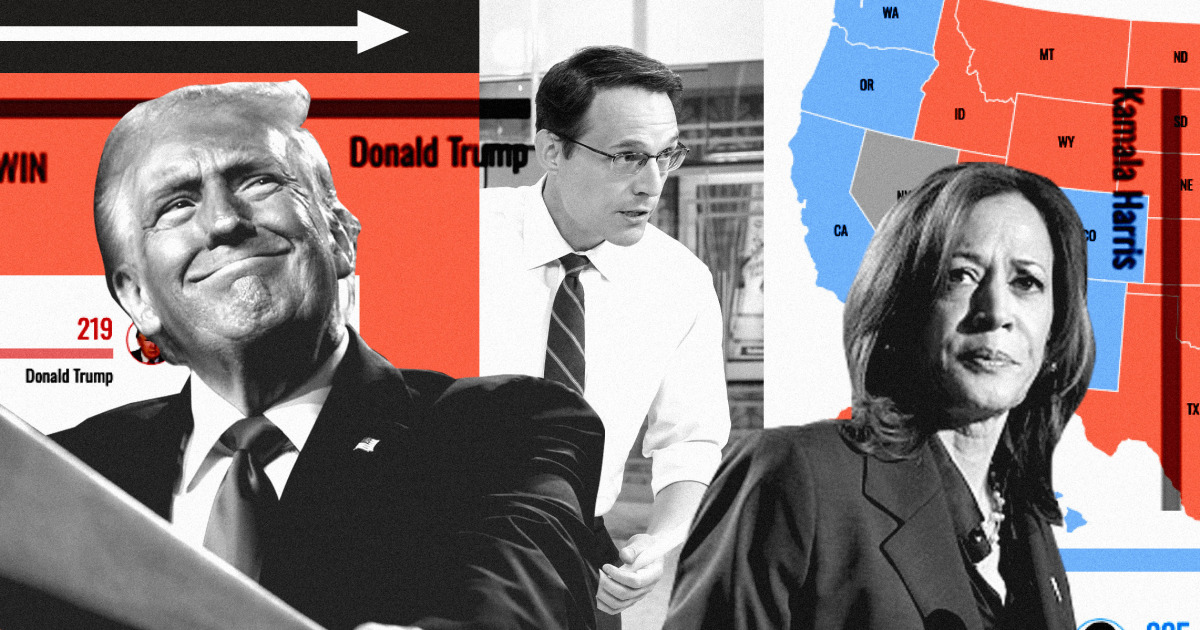Mortgage rates are up across the board today. According to Zillow, the average 30-year fixed mortgage rate has increased by 10 basis points to 6.64% — the highest this rate has been since early June.
Rates on home loans typically follow the 10-year Treasury yield, which has been rising since mid-September. This increase can partly be attributed to investors’ reactions to Trump’s popularity in the presidential election and his proposed policies regarding issues like taxes. Now that Trump has won the election, there’s a good chance that both the 10-year Treasury yield and mortgage rates will stay higher for longer.
Learn more: Is now a good time to buy a house?
Here are the current mortgage rates, according to the latest Zillow data:
-
30-year fixed: 6.64%
-
20-year fixed: 6.54%
-
15-year fixed: 5.98%
-
5/1 ARM: 7.27%
-
7/1 ARM: 7.21%
-
30-year VA: 5.99%
-
15-year VA: 5.49%
-
5/1 VA: 6.25%
-
30-year FHA: 5.70%
-
15-year FHA: 5.69%
-
5/1 FHA: 4.88%
Remember, these are the national averages and rounded to the nearest hundredth.
These are today’s mortgage refinance rates, according to the latest Zillow data:
-
30-year fixed: 6.69%
-
20-year fixed: 6.40%
-
15-year fixed: 6.03%
-
5/1 ARM: 7.67%
-
7/1 ARM: 7.35%
-
30-year VA: 6.05%
-
15-year VA: 5.65%
-
5/1 VA: 5.58%
Again, the numbers provided are national averages rounded to the nearest hundredth. Mortgage refinance rates are often higher than rates when you buy a house, although that’s not always the case.
Read more: Is now a good time to refinance your mortgage?
Use the free Yahoo Finance mortgage calculator to see how various mortgage terms and interest rates will impact your monthly payments.
Our calculator also considers factors like property taxes and homeowners insurance when determining your estimated monthly mortgage payment. This gives you a more realistic idea of your total monthly payment than if you just looked at mortgage principal and interest.
The average 30-year mortgage rate today is 6.64%. A 30-year term is the most popular type of mortgage because by spreading out your payments over 360 months, your monthly payment is lower than with a shorter-term loan.
The average 15-year mortgage rate is 5.98% today. When deciding between a 15-year and a 30-year mortgage, consider your short-term versus long-term goals.
A 15-year mortgage comes with a lower interest rate than a 30-year term. This is great in the long run because you’ll pay off your loan 15 years sooner, and that’s 15 fewer years for interest to accumulate. But the trade-off is that your monthly payment will be higher as you pay off the same amount in half the time.
Let’s say you get a $300,000 mortgage. With a 30-year term and a 6.64% rate, your monthly payment toward the principal and interest would be about $1,924, and you’d pay $392,607 in interest over the life of your loan — on top of that original $300,000.
If you get that same $300,000 mortgage but with a 15-year term and 5.98% rate, your monthly payment would jump up to $2,528. But you’d only pay $155,099 in interest over the years.
With a fixed-rate mortgage, your rate is locked in for the entire life of your loan. You will get a new rate if you refinance your mortgage, though.
An adjustable-rate mortgage keeps your rate the same for a predetermined period of time. Then, the rate will go up or down depending on several factors, such as the economy and the maximum amount your rate can change according to your contract. For example, with a 7/1 ARM, your rate would be locked in for the first seven years, then change every year for the remaining 23 years of your term.
Adjustable rates typically start lower than fixed rates, but once the initial rate-lock period ends, it’s possible your rate will go up. Lately, though, some fixed rates have been starting lower than adjustable rates. Talk to your lender about its rates before choosing one or the other.
Dig deeper: Adjustable-rate vs. fixed-rate mortgage
Mortgage lenders typically give the lowest mortgage rates to people with higher down payments, great or excellent credit scores, and low debt-to-income ratios. So, if you want a lower rate, try saving more, improving your credit score, or paying down some debt before you start shopping for homes.
Waiting for rates to drop probably isn’t the best method to get the lowest mortgage rate right now unless you are truly in no rush and don’t mind waiting until the end of 2024 or into 2025. If you’re ready to buy, focusing on your personal finances is probably the best way to lower your rate.
Learn more: How to get the lowest mortgage rates
To find the best mortgage lender for your situation, apply for mortgage preapproval with three or four companies. Just be sure to apply to all of them within a short time frame — doing so will give you the most accurate comparisons and have less of an impact on your credit score.
When choosing a lender, don’t just compare interest rates. Look at the mortgage annual percentage rate (APR) — this factors in the interest rate, any discount points, and fees. The APR, which is also expressed as a percentage, reflects the true annual cost of borrowing money. This is probably the most important number to look at when comparing mortgage lenders.
According to Zillow, the national average 30-year mortgage rate is 6.64%, and the average 15-year mortgage rate is 5.98%. But these are national averages, so the average in your area could be different. Averages are typically higher in expensive parts of the U.S. and lower in less expensive areas.
The average 30-year fixed mortgage rate is 6.64% right now, according to Zillow. However, you might get an even better rate with an excellent credit score, sizeable down payment, and low debt-to-income ratio (DTI).
Mortgage rates aren’t necessarily expected to drop in the last couple of months of 2024, but they might go down in 2025.













